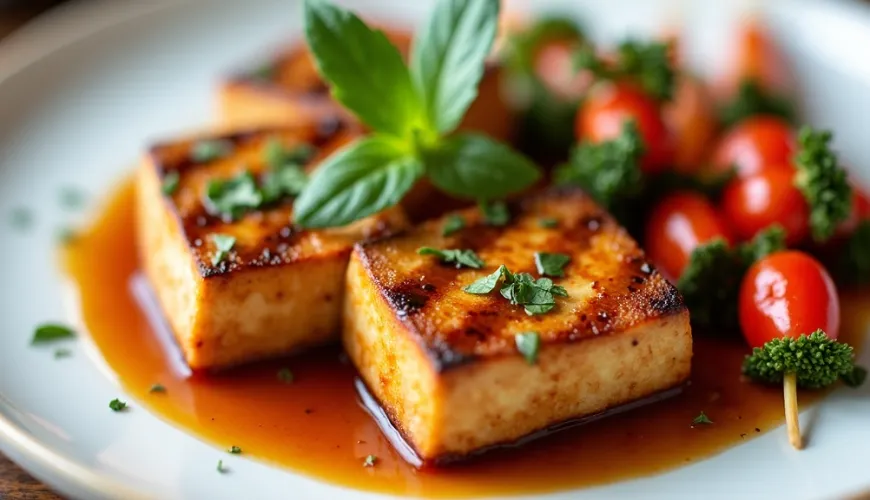
Discover the Secrets of Peking Sauce for Perfect Dishes

Introducing Peking Sauce - A Taste of the Far East That Will Win You Over
When you hear "Peking cuisine," most people immediately think of the famous Peking duck – a crispy delicacy served with thin pancake slices, spring onions, and a distinctive dark sauce. The Peking sauce, often referred to as sauce for Peking duck, is one of the key elements that gives this dish its unmistakable taste. However, this sauce has much wider applications than one might think and certainly should not be forgotten outside the context of a luxury restaurant. Today, chefs and home enthusiasts use it in everyday dishes, from noodles to chicken, and its popularity is growing even in Europe.
What is Peking Sauce?
Despite its name, Peking sauce is not exclusively meant for duck meat. It is a dark, thick, and sticky sauce with a complex flavor profile that combines sweetness, saltiness, light acidity, and umami notes. Its base consists of fermented soy paste, sugar, vinegar, garlic, and sometimes sesame oil or chili. In various versions, hoisin sauce also appears, which is often considered synonymous by Western chefs, although it is a different variant.
In China, every region has its own version of this sauce. Some are spicier, others sweeter or more aromatic thanks to the use of fresh herbs. The most famous one – sauce for Peking duck – is mildly sweet, with a deep umami character, and perfectly complements the juicy meat and crispy skin of the duck. This combination of flavors is one of the reasons why the dish has become an icon of Chinese gastronomy.
Peking Sauce at Home? Easier Than You Think
You might think that preparing such a refined sauce at home is a task for an experienced chef. In reality, the recipe for Peking sauce is relatively simple, and most ingredients can be found in a well-stocked store or an Asian specialty shop. A basic version might look like this:
Recipe for Homemade Peking Sauce:
- 3 tablespoons of hoisin sauce
- 1 tablespoon of soy sauce
- 1 tablespoon of sugar (preferably cane)
- 1 teaspoon of rice vinegar (or apple cider vinegar)
- 1 clove of garlic (finely chopped)
- a few drops of sesame oil
- optionally a pinch of chili or grated ginger
Mix all the ingredients in a saucepan and briefly simmer over low heat until the sugar dissolves and the sauce thickens. Done. The result? A thick, dark sauce with a rich flavor that you can use in dozens of ways.
One advantage of this sauce is its storability. Stored in a jar in the refrigerator, it can last for up to two weeks, so you can always have it on hand for a quick dinner or as a seasoning for your favorite dishes.
Not Just Duck - Peking Sauce and Chicken
Although the combination of "Peking duck and sauce" is classic, times are changing. Today, the sauce is often used with other types of meat – and most often with chicken. The reason is simple: chicken meat is accessible, quick to prepare, and thanks to its neutral taste, it absorbs the complex tones of the sauce wonderfully.
A typical example is chicken with Peking sauce, which is becoming a staple in modern Asian cuisine. Simply cut chicken breasts or thigh fillets into smaller pieces, sauté them in a pan, add the homemade sauce, and let it simmer briefly. Serve with jasmine rice, rice noodles, or even in a sesame bun as an Asian burger.
One mother of two from Prague shared her quick dinner recipe on social media: "The kids love sweet chicken, so I make them chicken with Peking sauce, rice, and vegetables. It's ready in 20 minutes, and not a bite is left."
Besides meat, the sauce also pairs well with tofu, seitan, or tempeh – an ideal choice for vegetarians and vegans. Its strong flavor can add intensity to otherwise bland ingredients.
A Taste That Connects the World
What makes the taste of Peking sauce so exceptional? It is primarily its ability to blend basic flavors – sweet, salty, sour, and umami – into a balanced whole. In one spoonful, you'll find both the caramel touch of sugar and the depth of fermented soy paste and the spicy sharpness of garlic. This flavor complexity is something that wasn't long common in European cuisine, but today more and more people are seeking it.
Interestingly, Asian cuisine, particularly Chinese, is built on this harmony of flavors. Peking sauce is a great example of this. It's no wonder it's often used as a base for marinades, dips, or to flavor wok dishes.
In some restaurants, it is even offered as an alternative to the classic BBQ dip. Mixed with honey and a bit of lime juice, it creates an unusual and tasty glaze for vegetable skewers or grilled meat.
Where It Comes From and Why It Remains Relevant
Although the roots of Peking sauce reach deep into the history of Chinese imperial cuisine, its popularity remains strong in the 21st century. Why? Versatility and ease of use. In a time when people strive to cook quickly yet deliciously, sauces like this become a favorite helper. Just a few drops, and even a simple meal takes on a new dimension.
In addition, at a time of growing interest in sustainable and healthier eating, Peking sauce proves to be an ideal solution. It contains no preservatives, colorings, or artificial flavors – if you prepare it at home. And because it's intense, you only need to use a little, which benefits not only the taste buds but also the budget.
Lastly, it's also a matter of cultural connection. Food has the power to break down barriers and bring people together, and Peking sauce is such a bridge between East and West. As renowned British chef Ken Hom said: "Food is the most universal language there is." And today, this language is spoken by the sauce that once graced the tables of Chinese emperors.
Whether you use it for traditional Peking duck, baked tofu, or as a dip for spring rolls, Peking sauce will bring an exotic flair to your kitchen that you will fall in love with.

